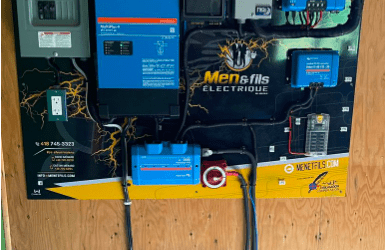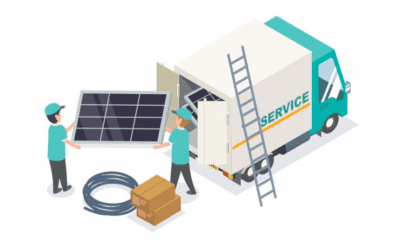
Solar systems with storage are becoming increasingly popular as an excellent alternative to polluting, expensive, and noisy generators. However, to ensure optimal performance and long-term durability of these systems, regular maintenance of your solar system is essential. The investment for such projects can be significant, and the last thing you want is for the system to stop working after just one year. In this article, we will explore the best practices for maintaining solar systems with storage.
Here are the Best Methods for Maintaining Solar Systems
1. Clean the Solar Panels
The first step in maintaining a solar system with storage is to regularly clean the solar panels if they are easily accessible. However, avoid taking unnecessary risks if the panels are too high. Over time, solar panels can accumulate dust, leaves, bird droppings, and other debris, which can reduce their energy production capacity. It is recommended to clean the solar panels at least once a year, but in areas where dust and debris are more abundant, cleaning every six months may be necessary. Pay special attention to the edge of the aluminum frame where dirt often accumulates and covers a part of the cells. It is important not to use soap or cleaning products on your panels as it can remove the protective coating on the glass, affecting the panel’s performance. Additionally, it is recommended to clean your panels with demineralized water to prevent leaving any residue.
2. Inspect the Solar Cells
If you have access to your modules for cleaning, try to detect any potential microcracks on the solar cells. These cracks can develop over time on certain modules and are often caused by physical stress and thermal shocks. Microcracks are often a sign of poor panel quality and can significantly impact efficiency. If possible, use a thermal camera to more easily detect these issues.
3. Check Electrical Connections
Electrical connections in a solar system with storage can loosen or corrode over time. It is important to regularly check these connections to ensure they are secure and functioning correctly. At a minimum, perform a visual inspection of the connections, especially on battery terminals where corrosion (greenish color) can occur. Before any inspection, make sure to shut off all power sources to work safely. Similar to detecting microcracks on solar cells, use a thermal camera to ensure there are no hotspots or voltage issues in your connections.
4. Monitor Performance
Owners of solar systems with storage should regularly monitor their solar system to ensure optimal operation and quickly respond to any faults that could impact long-term system performance. However, no one can keep an eye on their system 24/7. That’s why we strongly recommend installing a monitoring system, whether it’s a standalone project or connected to the grid. Such a system will allow you to keep constant track of your system’s performance and receive real-time alerts for any potential issues. By keeping all the data since the system’s installation, you can improve your system’s efficiency or optimize your energy consumption.
5. Take Care of the Batteries
The most important and expensive component of an off-grid solar project is the storage system. You definitely don’t want to replace your batteries after just one year of use. In order to be maintaining your solar systems the best you can, the first thing to ensure is to never exceed the recommended depth of discharge according to the battery chemistry type. For lithium batteries, they come with Battery Management Systems (BMS) that ensure safety by shutting down the battery when the depth of discharge reaches a critical level, preventing it from discharging to damaging levels. If you power AC loads, there is a good chance your inverter has a low voltage disconnect feature that will shut off AC loads when the battery voltage reaches a pre-defined level. However, be cautious with DC loads. Regardless of whether you have a lithium, lead-acid, or AGM battery, it is advisable to add a low voltage disconnect on the DC side to prevent these loads from draining the battery.
For lead-acid batteries, we recommend checking the water level using appropriate tools and topping it up if necessary every month. Additionally, it is beneficial to desulfate these batteries once a month. This process can be done through the solar charge controller or specific battery chargers, and it helps improve battery performance.
There may come a time when you need to replace your batteries after several years of use or decide to increase the storage capacity. We recommend changing all your batteries at once and not replacing them one by one. If you integrate a new battery into an existing battery bank, it will be discharged by the weaker batteries, and within a few weeks, it will become an old battery itself. Furthermore, never mix different capacities or brands of batteries. Always use the same brand, model, and level of wear.



